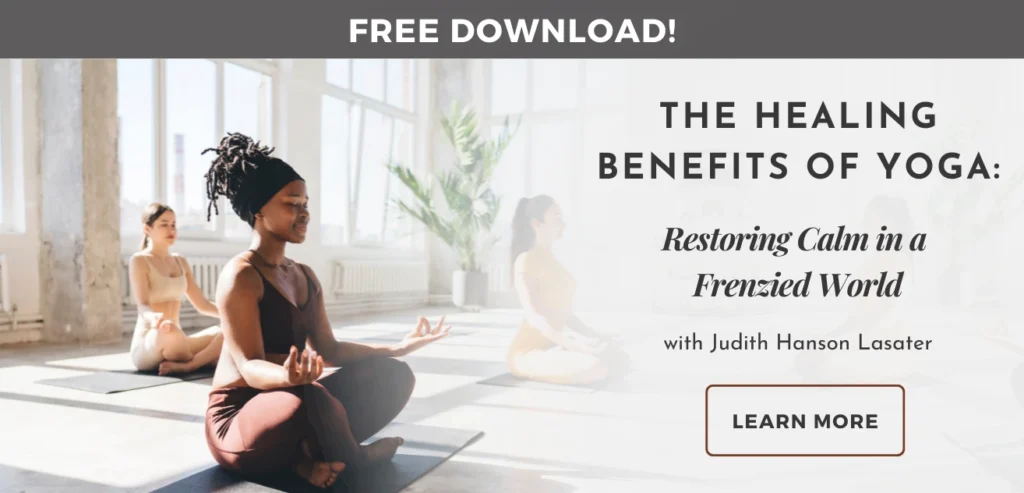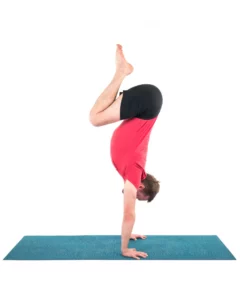Moving: Lessons in Aparigraha

Yesterday morning, while I was working in my office writing an article, my husband walked in with an armful of Pyrex dishes, “Do we really need five casseroles?” he asked.
“What if I break one?” I responded.
Eye roll and exit.
We’re moving next week. Thankfully, my husband is neat, efficient, and great at packing. He’s also bafflingly unattached to stuff.
Next up, an old sisal floor mat with a wordless eyebrow lift and head tilt.
“Okay, okay, you can throw that out,” I sighed.
Then there’s my grandmother’s beat-up rocking chair, in which she fed my father when he was an infant 85 years ago. For decades, it’s been resting, unused, often on top of a heap, in our various basements.
But I stood firm, “Nope, you’re gonna have to pry that one out of my cold, dead hands.”
For reasons that are too boring to discuss but have lots to do with the pandemic, this will be our fourth move in five years (two of which were across the Pacific). Hopefully, this will be our last move for a while.
Each time we move, I glimpse a ripe opportunity to purge. Still, I wonder if I should save the 3 plastic shopping bags full of ancient Christmas bows, a stash of envelope-less greeting cards, a box full of shoes I’ll never wear again, and two brand new but long-forgotten canary yellow bedspreads? Oh, and I have way too many spoons and a few vegetable peelers that are dull and useless, and can we please not talk about my closet?
And then there’s aparigraha.
What Is Aparigraha?

One of the yamas, or self-regulating principles of the yoga tradition, aparigraha means non-grasping or non-hoarding. I am no hoarder! I prefer to frame my tendency to craft imaginary uses for long-forgotten, random items as a noble preparedness. I can use these towels with bleach stains on them as rags! I can use this empty spray bottle for my plants! What if the power goes out, and we need these old blankets to survive?
Admittedly, I need to let go of almost everything my patient husband shows up at my office door with.
But letting go of stuff can feel like letting go of happy memories, and I find myself lapsing into melancholy. Remember when Bhaerava (my son) used to sleep on this sweet little blanket? Remember when we drank tea on these chairs and laughed so hard I spit it out? Remember when I was wearing this dress, and we were dancing to that song? Remember how much we loved being here in this house?
But that sort of melancholy is not an accurate reflection of reality. My son also vomited on that blanket, and I had to clean up the mess I made from that tea. We also had an argument the night of that dance, and the house was noisy from the traffic. I called the kitchen “the camping kitchen” because it was so tiny and frustrating.
The past was not perfect. It was wonderful and fun, but it was also sad and awful sometimes. It was just life. Pining for a perfect past is pining for an illusion. I can’t go back, but I can move forward.
Aparigraha: Gateway to Freedom

In sutra 2.39, Patanjali writes: Aparigraha sthairye janma-kathaṃtā sambodhaḥ – “freedom from wanting unlocks the real purpose of existence.” (trans. Chip Hartranft)
Yeah, I get that. I need less junk and more yoga. Still, leaving stuff, places, and people behind is hard.
But if I don’t let it go, the universe will do it for me. It’s the rule, not the exception. The yoga tradition reminds us that everything is impermanent. All of it will eventually go: my stuff, my house, my favorite restaurants, my friends, my partner, my body, and mind.
So, what’s left?
What Remains After Letting Go

It’s not simply the memories, although they can certainly be sweet. The only thing truly left is the magnificent force of love that drives the manifestation and withdrawal of everything in this world. Taking some time daily, through meditation, contemplation, or prayer, to connect with that force not only makes it all worth it, but it also prepares us, in small and big ways, for surrendering into the arms of that love and allowing it to support and guide us through the inevitable processes of loss.
Taking the right action, surrendering the results of that action to a higher self, and learning to love more are the deepest lessons that yoga practice offers.
I told my friend, also a yoga teacher, that we were moving. She said, “Good. Moving is a spiritually advancing experience.”
Right. But I still need to surrender those aluminum foil balls to the recycling bin.
Also, read...
Yoga to Soothe Mind and Body: How to Practice Supported Pigeon Pose
Oct 24 – Leza Lowitz
Study: Yoga Can Help Foster Greater Mind-Body Integration – The Four Stages of Body Awareness
Sep 27 – Eva Norlyk Smith, Ph.D.
What Your Body Tells You Can Protect You From Stress, Study Suggests
Aug 17 – Dr. B Grace Bullock
Related courses
Reprinted with permission from Subtle Yoga.com

 Committed to the widespread adoption of yoga as a population health strategy, Kristine Kaoverii Weber, MA, C-IAYT, eRYT500, YACEP has been studying yoga and holistic healing for nearly 30 years advocating, speaking, and teaching about yoga since 1995, and training educators since 2003. Her organization, Subtle® Health, LLC, provides holistic, mind-body training, education, and clinical services with the mission of enhancing community health infrastructure. She is the director of the Subtle® Yoga Teacher Training for Behavioral Health Professionals program at MAHEC in Asheville, NC, presents workshops and trainings internationally, and is frequently invited to speak about yoga at health care conferences. After completing her BA and MA at Georgetown University, Kristine trained extensively in many styles of yoga, including Viniyoga, as well as in Asian bodywork therapy and homeopathy.
Committed to the widespread adoption of yoga as a population health strategy, Kristine Kaoverii Weber, MA, C-IAYT, eRYT500, YACEP has been studying yoga and holistic healing for nearly 30 years advocating, speaking, and teaching about yoga since 1995, and training educators since 2003. Her organization, Subtle® Health, LLC, provides holistic, mind-body training, education, and clinical services with the mission of enhancing community health infrastructure. She is the director of the Subtle® Yoga Teacher Training for Behavioral Health Professionals program at MAHEC in Asheville, NC, presents workshops and trainings internationally, and is frequently invited to speak about yoga at health care conferences. After completing her BA and MA at Georgetown University, Kristine trained extensively in many styles of yoga, including Viniyoga, as well as in Asian bodywork therapy and homeopathy.
She is the author of The Complete Self Massage Workbook and has published articles in the International Association of Yoga Therapist’s journal, Yoga Therapy in Practice, and other wellness publications. Her work has been featured in Redbook, BodySense, Women’s World, Natural Health, and Lifetime TV.
Recent articles
Creating a Samskara of Gratitude: Transforming Your Yoga Practice and Your Life (Free Video with Judith Hanson Lasater)
Dec 16 – Eva Norlyk Smith, Ph.D.
Teaching Svadhyaya: 3 Ways to Encourage Self-Study in Yoga
Dec 15 – Meagan McCrary
In Celebration of Gray-Haired Yoga – Busting the Myth of the Yoga Body
Dec 12 – Charlotte Bell
Categories
Upcoming courses
Recent articles
Almost there...
Sorry, we couldn't find anything...
Yoga Teaching
Creating a Samskara of Gratitude: Transforming Your Yoga Practice and Your Life (Free Video with Judith Hanson Lasater)
How Your Practice Can Cultivate a Richer Emotional Life We usually think of yoga…
Dec 16 – Eva Norlyk Smith, Ph.D.
Yoga Practice Tips
Teaching Svadhyaya: 3 Ways to Encourage Self-Study in Yoga
As yoga teachers, our job is to teach yoga. This means more than…
Dec 15 – Meagan McCrary
Yoga Practice Tips
In Celebration of Gray-Haired Yoga – Busting the Myth of the Yoga Body
I found my first grey hair when I was 22. It wasn’t completely shocking.…
Dec 12 – Charlotte Bell



